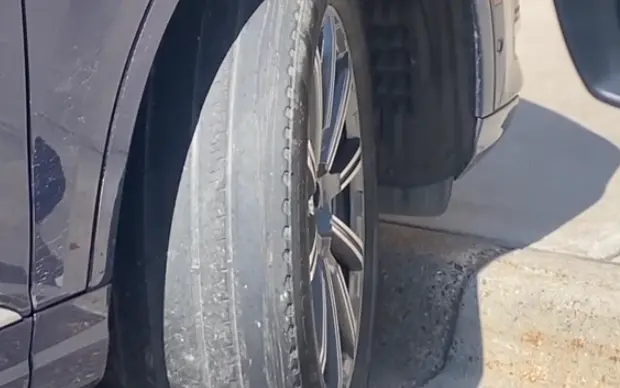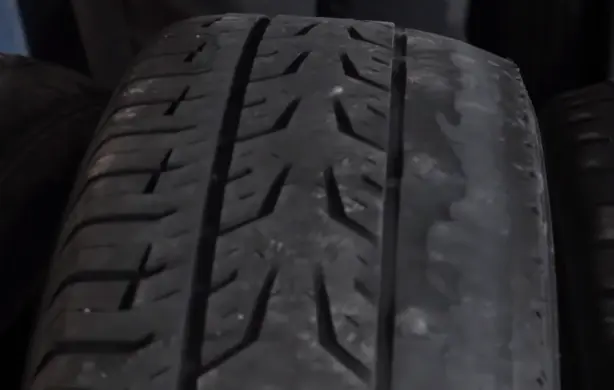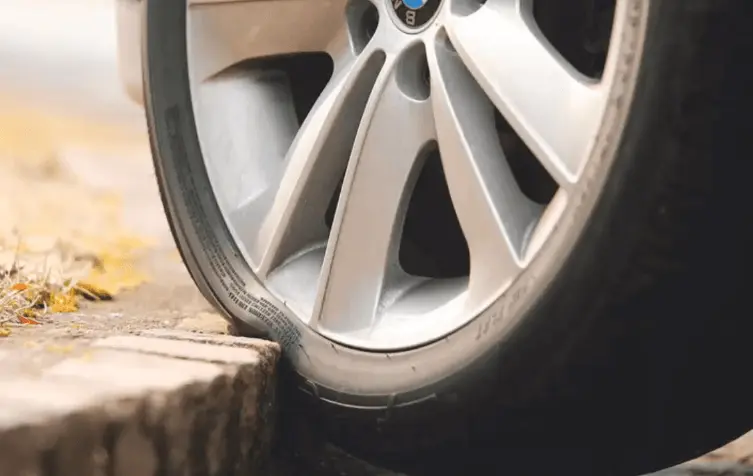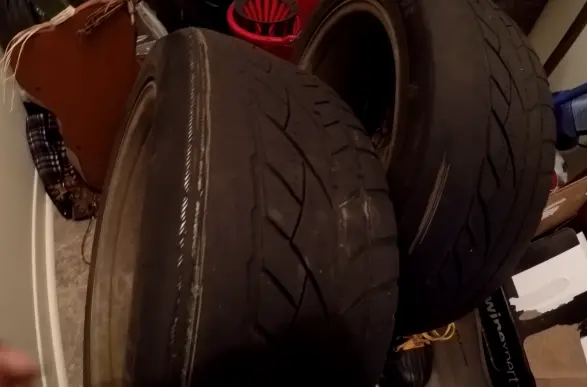What Is Tire Feathering
One of the most common types of tire wear is tire feathering, in which one side of the tread blocks and ribs wears out faster than the other side. In addition to causing unpleasant road noise, tire feathering can decrease tire life and decrease handling and stability.
The vehicle’s suspension or alignment can also be at fault if you experience this problem. Most often, feathering is caused by wheel misalignment or worn-out suspension components. This type of tire wear can be severe if left unattended. Let’s find out the causes and fixes of tire feathering in detail.
When Will Feathered Tires Smooth Out?
If you noticed your feathered tire early, you could fix this issue by using wheel alignment or fixing the suspension problems. After some time, your tires will ultimately smooth out.
However, if your tires are feathered severely and their tread depth reaches the minimum legal tread depth, you’ll have to replace them with new tires.
But before installing new tires, do fix the alignment or suspension problem causing feathering, otherwise, new tires will also be feathered if the problem is left unfixed.
What Causes Tire Feathering?
The following reasons can cause feathered tires:
- Improper Wheel Alignment
- Unbalanced Tire Pressure
- Damaged Bushings
- Bad Ball Joints
Improper Wheel Alignment
Wheel alignment is the most crucial part of the suspension that ensures your car’s wheels meet the road at a right angle. Extreme toe in or toe out can cause feathering by pulling the tire at a slightly angled, which creates angled or one sided wear.
Unbalanced Tire Pressure
In order for the tires to perform optimally, they must be inflated to the appropriate pressure. The manufacturer’s recommended air pressure should be followed for optimum tire performance and to avoid feathering.
Tire wear and feathering can be caused by unbalanced tire pressure. Ensure you check the pressure of your tires at least once a week or before a long drive.
Damaged Bushings
Bushings are essential to your vehicle’s suspension, which helps absorb shocks and vibrations. When the bushings get damaged, it causes wheel misalignment, ultimately leading to one sided tire wear or feathered tires.
Feathered tires produce noise and cause vehicle instability and handling issues.
Bad Ball Joints
Ball joints are another essential part of the suspension that connects the steering knuckles and front axle control arms to work them together to ensure smooth movement and easy handling.
Damaged or bad ball joints can change the angle of your wheels or cause wheel misalignment, which results in feathered tires.
Tire Feathering Noise
Feathered tires produce roaring or low-pitched humming noise while driving. Sometimes it is also confusing, like a bad wheel bearing noise. Noise can be the initial symptom of feathered tires for many drivers.
Most often, when you hear feathering noise, it becomes severe, and you find it noticeable after inspecting the feathered tires. If you’re unassured, visit your nearest car professionals, and they can easily spot the culprit of the noise.

Tire Feathering Symptoms
Uneven tire wear from one side of the tire or rounded tread block edges clearly indicates feathered tires. Following are the symptoms of feathered tires.
Increased Road Noise
Feathered tires produce roaring or low-pitched humming noise on the road. You can listen to this type of noise clearly on high way or while driving at high speed.
Steering Wheel Vibrations
The steering wheel vibrates, especially at high speed. There could be other factors causing wheel vibration, and feathered tires are also one of them.
Uneven Tire Wear
Feathering can cause quick tire wear from one side of the tire, resulting in uneven tire wear. Uneven tire wear from one side of the tire is the most common and noticeable symptom of feathered tires.
Reduced Handling
Feathered tires can cause reduced handling and stability, and you may feel instability, especially while cornering.
Is Tire Feathering Dangerous?
The answer to this question depends on the tire condition. If you notice feathering at the initial stage and fix the culprit causing feathered tires, it’s out of danger and safe to drive on.
But if you notice feathering when you are loosing handling and stability while cornering or the one side of the tire wears out to the minimum tread depth level, it can be dangerous to drive on feathered tires.
The most helpful way is to inspect your feathered tire from tire professionals and follow their guidelines because they can recommend the best solution after inspecting feathered tires.
Tire Feathering Fix
Tire feathering can’t be fixed because the tires are already feathered, and the damage is already done. However, if the issue is not severe, you can fix misalignment and suspension issues to prolong your tire’s life.
You can reduce feathered tires issue and prolong the life of your tires by rotating them between 5000 and 10,000 miles regularly and inspecting them regularly. It is recommended to visit your nearest tire professional to fix the feathered tires.
Do Feathered Tires Need To Be Replaced?
It depends on how much damage happens due to feathering. If you get it early, you can avoid feathering by fixing misalignment and suspension components.

But if the affected tires are feathered severely below the legal tread depth level per your state driving laws, you may need to replace them with new tires. The best solution is to inspect tires from a tire professional and follow the guidelines.
Conclusion
As discussed in detail, tire feathering occurs when the tire is worn out from one side and the other side of the tire remains flat. As one side is worn out and the other is flat, handling and stability issues occur, especially during cornering.






